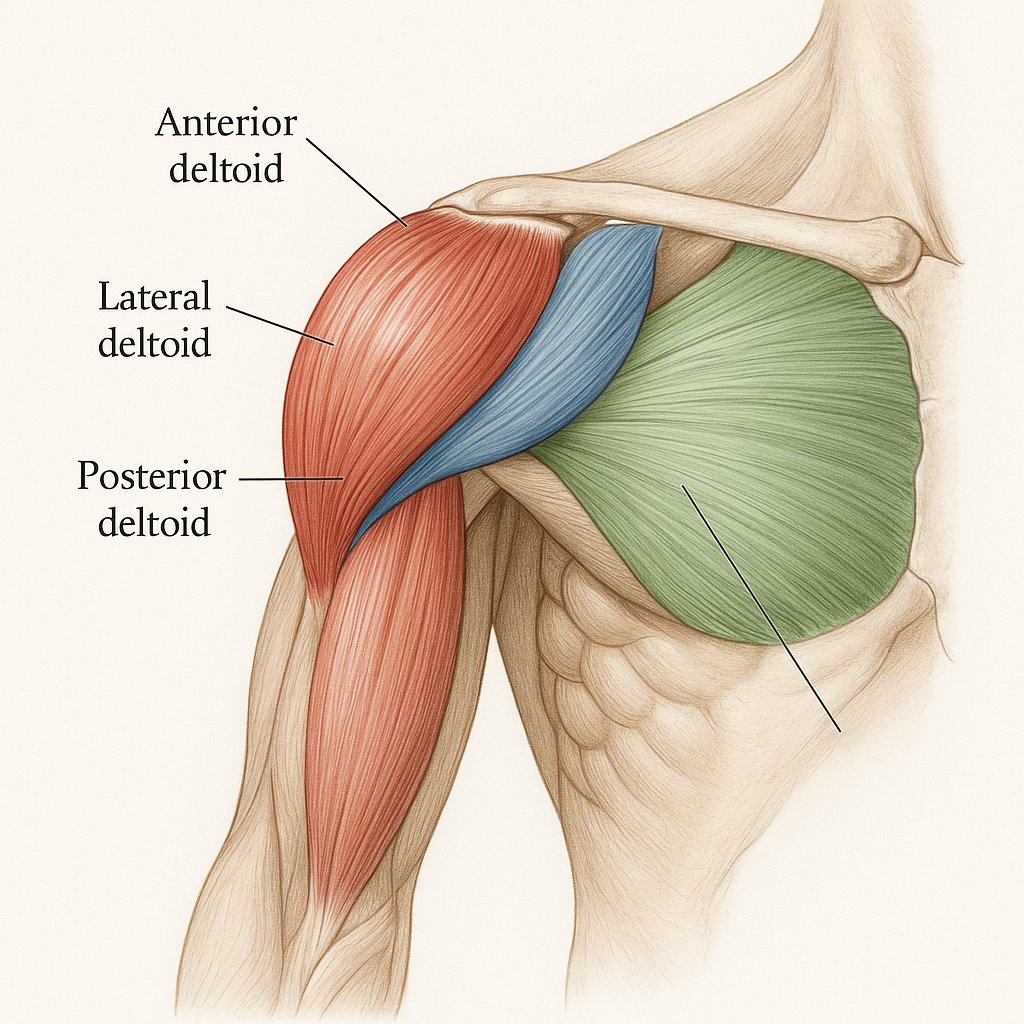The most effective way to work all three shoulder heads (anterior, medial, and posterior deltoids) is to combine compound presses like the shoulder press or Arnold press with targeted isolation exercises such as lateral raises and rear delt raises. This approach ensures balanced shoulder growth, improved strength, and injury prevention.
Knowing which shoulder exercises target all three heads is vital if you want round, strong, and injury-resistant shoulders. The deltoids are made up of three distinct parts (heads), and no single move hits them all equally. Below, you’ll learn which exercises you need, how to combine them, and how to build the best possible shoulder routine.

What Are the Three Shoulder Heads?
- Anterior Deltoid (Front): Responsible for front arm raises and pressing movements.
- Medial Deltoid (Side): Creates shoulder width; key for side arm raises.
- Posterior Deltoid (Rear): Essential for pulling motions and good posture.
Each head is activated differently depending on the exercise.
Why You Need to Train All Three Shoulder Heads
- Improves your strength and physique
- Supports better posture
- Reduces risk of injury
Training just one or two heads leads to muscle imbalances and a higher risk of pain or dysfunction (ACE Fitness, 2024).
Top Exercises That Hit All 3 Shoulder Heads
1. Shoulder Press (Dumbbell or Barbell)
Best for: Anterior & Medial Delts, moderate rear delt activation
The classic shoulder press (seated or standing, dumbbell or barbell) is a must. Studies show it hits the front deltoid hardest (~33% activation), the side deltoid (~28%), and some of the rear (~11%) (NCBI, 2023).
2. Arnold Press
Best for: All three heads with slightly increased range
Rotates dumbbells from palms-in to palms-out, boosting activation in the front and side deltoids, while involving the rear head slightly more than a standard press (Healthline, 2023).
3. Lateral Raises (Dumbbell or Cable)
Best for: Medial Delts (Side), also hits front and rear
Lateral raises are the gold standard for the side deltoid but also activate both other heads to a moderate degree—especially with cables or machines for constant tension.
4. Rear Delt Raises or Reverse Fly
Best for: Posterior Delts, some side and front
Whether bent-over with dumbbells or using a machine, this move maximizes rear deltoid activation (24–30% or more) and supports overall shoulder stability (ACE Fitness, 2024).
5. 45-Degree Incline Row
Best for: Rear and Side Delts
This row variation (chest-supported) is one of the most EMG-proven ways to hit the rear and side delts together (BarBend, 2024).
Sample All-Around Shoulder Workout
| Exercise | Sets x Reps | Focus Area |
|---|---|---|
| Dumbbell Shoulder Press | 3 x 8–12 | Front & Side |
| Arnold Press | 3 x 8–12 | All 3 Heads |
| Cable Lateral Raise | 3 x 12–15 | Side |
| Bent-Over Rear Delt Fly | 3 x 12–15 | Rear |
| Face Pulls (Optional) | 3 x 15 | Rear & Health |
Tip: Start with the movement for your weakest head first (often rear delts).
Frequently Asked Questions
Do I Need to Do All These Exercises Every Session?
No, but you should rotate them through your program each week for balanced development.
Are Machines or Free Weights Better?
Both are effective. Free weights demand more stabilization, while cables/machines provide constant tension—mix them for best results.
How Often Should I Train Shoulders?
2–3 times per week is ideal, allowing for at least 48 hours recovery between sessions.
Has Anything Changed in 2024?
The fundamentals remain the same, but new EMG research continues to validate the effectiveness of compound and isolation exercise combinations (BarBend, 2024).
Conclusion
For full, strong shoulders, combine pressing, lateral, and rear delt exercises in your routine.
Start today: Try the sample workout above for 4–6 weeks and see real results!
